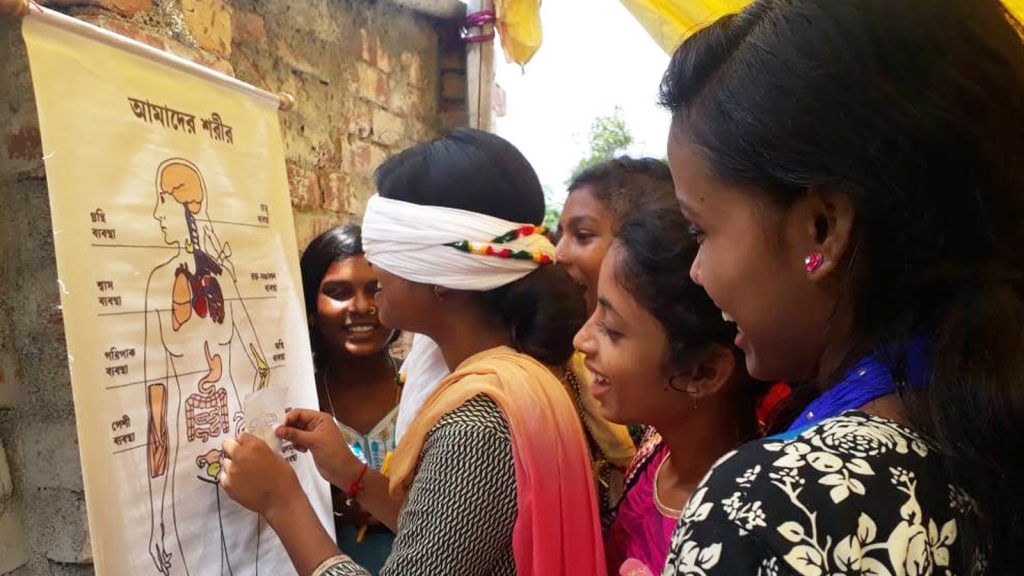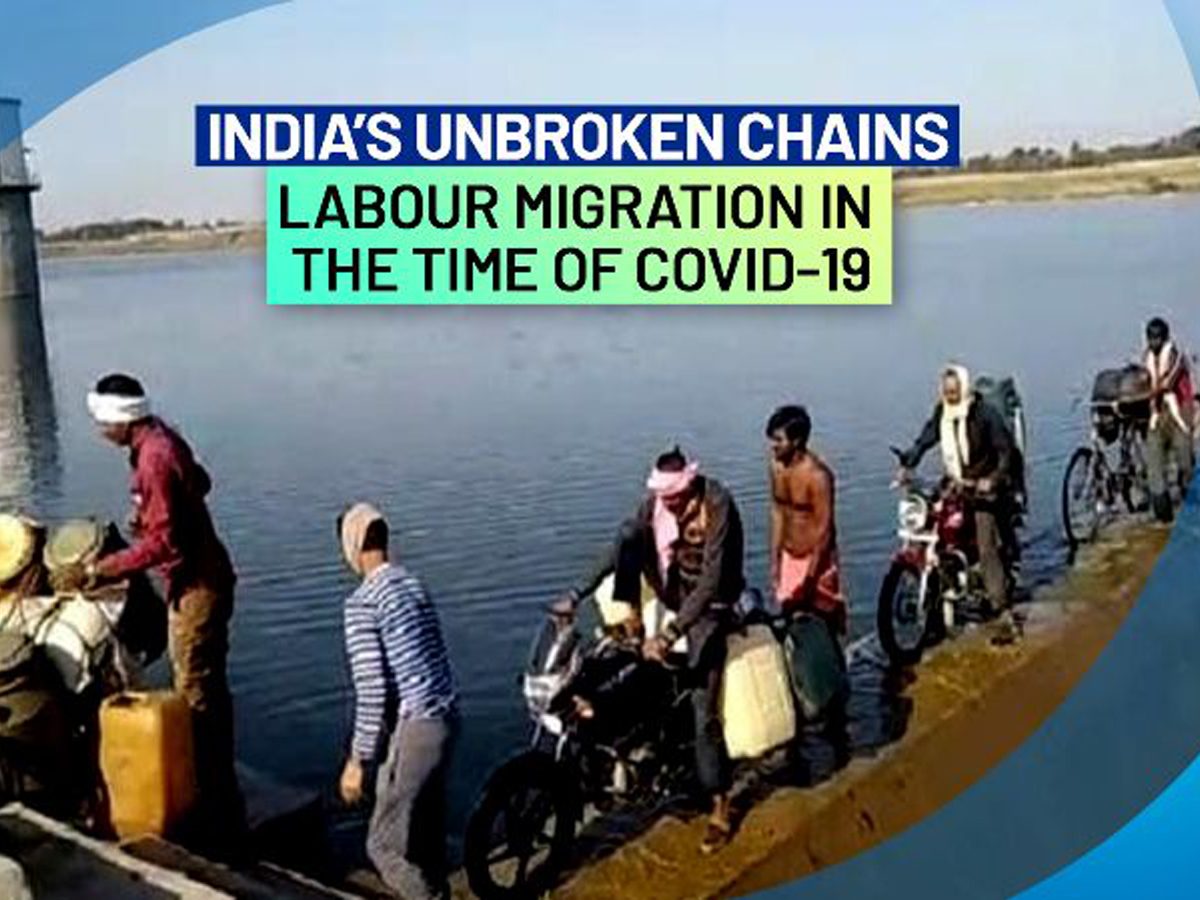download the article to read later
The Champa Kit is a package of stories games for rural, out-of-school adolescent girls. It is an example of how human-centred design can work; how communication, product and systems design disciplines can be applied to identify and solve a complex social problem and create a lasting resource.
What is the project about?
Reproductive health is a wicked problem impacting mortality and intergenerational poverty. Patriarchy teaches girls and women that they are valued less than boys and men, their bodies are not their own, and menstruation is something to be ashamed of. These are difficult, taboo topics that parents, teachers and doctors avoid, even though it is well known that talking about these could save millions of lives.
In 1996, Thoughtshop foundation developed The Champa kit, a package of stories games for rural, out-of-school adolescent girls. The kit is based on the story of a 12-year-old girl named Champa. It was designed to open a way to have a wide range of engaging and enjoyable conversations, to help the girls redeem their sense of self-esteem, discover their agency, realise their ownership over their own bodies and reproductive processes, and find the confidence to make decisions on marriage, family planning, and their overall sexual health.
The kit goes further and empowers young leaders to have similar conversations with their peers, where elders might shy away. Instead of using just biology as the main point of conversation, the Champa kit uses games that invite participants to reflect and question social norms; for example, the centrality of marriage for girls, or the conventional (and often violently discriminatory) binary view of gender. On another level, the Champa Kit has enabled hundreds of under-resourced grassroots organisations to roll out consistently high quality adolescent reproductive/sexual health and rights programmes at low cost.
The story and the aids/activities were originally conceived and developed after extensive research, analysis and field-testing conducted by the Foundation in collaboration with Child In Need Institute. A similar kit for boys (Shankar kit) was developed in 2000. Over the next 20 years and thousands of sessions, about a dozen partner organisations have contributed to significant incremental changes to both these kits.
The Champa Kit is one of several examples of how human-centred design can work; how communication, product and systems design disciplines can be applied to identify and solve a complex social problem and create a lasting resource.
In 2014, our supporter AJWS helped us build a deeper understanding of Sexuality, and we began to screen the Champa kit again to weed out gender-binary stereotypes and language. We also modified the card game to incorporate several new activities to explore the Gender Spectrum, and to expanding the definition of GBV to include lived experiences of the LGBTIQ community. This enabled the kit to move to be one on ARSHR (Adolescent Reproductive and Sexual Health and Rights).
Project Funded by
Till 2007, our financial model was to engage with partners as communication consultants, and use that fund to continue our own design development projects.
We began our donor journey with Sir Ratan Tata Trusts in 2010.
Our current donors include American Jewish World Service, Human Capability Foundation and DKA Austria. These organisations support different aspects of our Community Based Youth Empowerment programme we call Youth Resource Cells.
Stakeholders Involved
The original Champa kit was developed in 1996 by TF in collaboration with CINI (Child in Need Institute).
The stakeholders during this phase of development were out-of-school adolescent girls, peer leaders, parents, NGO field workers and NGO programme leads.
The next big iteration came in 1998, when we adopted the kit in Hindi for Care India, for their projects in Madhya Pradesh. NGO activists were added to the stakeholders list.
Since 1998, the kit has been bought by many organisations who were starting work on ARH (Adolescent Reproductive Health) but did not know how to begin. Notably the government of West Bengal (through CINI) and independent organisations from Hindi speaking states, who had seen the kit work in the Care field areas.
In 2005 we started work with Oxfam on the We Can Campaign, which was centered on GBV (Gender Based Violence). This shifted the project from being just on ARH to ARHR (Adolescent Reproductive Health and Rights).
What is the impact?
As of 2020, the Champa and Shankar Kits are still being sought after, and have reached an estimated 2 million adolescent girls and 1.5 million boys. In the meantime, TF has created over 150 interactive tools on issues ranging from Disability to Tribal Farming Practices. These are tools are being used by organisations in India and at least seven other countries.
The Champa kit is currently synchronised in three languages, English Hindi and Bangla. Older language versions exist in Tamil, Telegu, Marathi, Assamese, Khasi and Garo, which are archived with partners who collaborated with us on those languages.
Amongst our relatively invisible stakeholders are over 600 tiny local NGOs all over India, who have used the kit to roll out comprehensive ARSHR programmes in a short time. For these small organisations, investing in one Champa Kit represents approximately one-fiftieth (1/50) the cost they would have incurred to get trained on the subject and create effective tools to implement it.
Gallery:
Images by Thoughtshop Foundation | © all rights reserved
Links to read more:
An interesting article on the CINI collaboration, stakeholders and design challenges can be found here.
A summarised list of 17 important project/partner collaborations from 2002 to 2015 can be found here. Stakeholders were somewhat varied, and we used incremental design to accommodate the range.
About Thoughtshop Foundation:
Thoughtshop Foundation applies design thinking on Human Rights issues, mainly Child Rights and Gender. Development of playway, visual, interactive conversation tools like the Champa kit is one of their strategies.
The other important part of TF’s work involves its direct longitudinal outreach, a community-based Youth Leadership programme, which nurtures 1500 children (from the time they are 6 years until they are 18-year-olds) in rural, peri-urban and urban slum communities.








